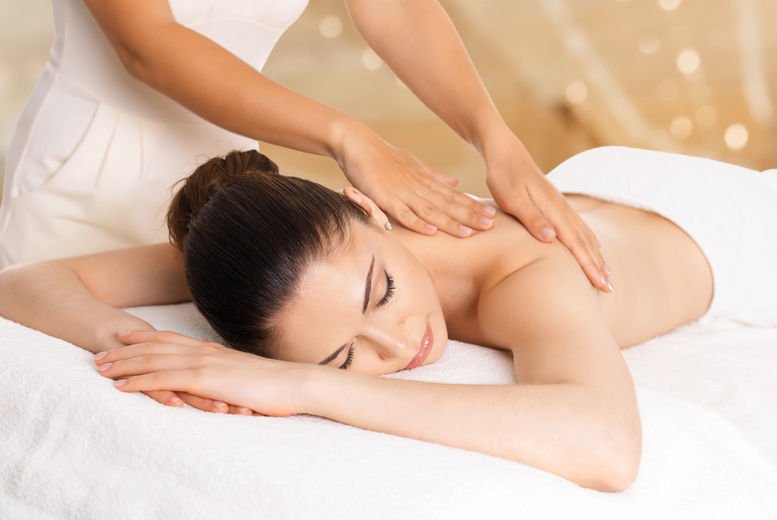Tui Na (Deep Tissue Chinese Massage) is a restorative treatment with numerous advantages. If you’re interested in giving it a try, contact an American Organization for Bodywork Therapies of Asia-certified practitioners.
Tui Na massage, like many other healing methods, is most effective when used in conjunction with other natural treatments and a healthy lifestyle. To maximize the advantages of each treatment, your practitioner may advise you to undertake self-massage, stretches, and exercises on your own.
Read Also: Benefits of Hot Stone Massage Therapy
What are the Techniques Involved in Chinese Massage?
In tuina massage, there are eight primary techniques:
- palpable (mo)
- reconnecting (Jie)
- lifting in the opposite direction (duan) (ti)
- holding (tui)
- pressing (an)
- kneading (mo)
- kneading (mo)
- kne (na)
The Therapeutic Chinese Massage Philosophy
Chinese massage, like Western massage, is regarded to be beneficial in reducing chronic pain and emotional discomfort, enhancing bodily mobility and function, and assisting in the recovery of illness and injury. However, the specifics of how massage is considered to do this differ from those in Western traditions.
Acupoints are points on the body where qi tends to accumulate or pool. To restore the free flow of qi, acupuncture and acupressure treatments can be used to target these locations. To achieve this with acupuncture, thin needles are placed into the skin’s surface; in acupressure, finger pressure is utilized instead.
The body is regarded to function properly in traditional Chinese medicine when the essential life energy, qi (sometimes spelled chi), can flow freely along the meridians, or energy routes. Blockages in the flow of qi are frequently the cause of health problems and suffering.
Following are some of the main features of the Chinese Massage philosophy:
- It emphasizes Physical and Emotional Well-Being. Tuina massage is based on traditional Chinese medicine, which emphasizes emotional and physical aspects of a person’s well-being, as well as environmental factors including climate, relationships, and cuisine.
- Establishing Harmony and Balance: True health is reached when one has established harmony and balance within oneself and their environment, according to the fundamental principle of tuina massage.
- Restoring Balance in the Body: Tuina massage aims to restore balance to the body’s yin and yang by removing blockages and disturbances that emerge as illness, disease, and emotional disorders.
How Does the Chinese Massage Work?
For millennia, Traditional Chinese Medicine (TCM) has acknowledged the importance of massage treatment in the promotion of wellbeing and health. Massage is thought to have a holistic effect on the customer, encouraging physical and psychological health and well-being in this tradition. To put it another way, thousands of years of traditional Chinese medicine agree with mounting data from Western scientific research: massage can be a potent health tool. Reflexology and Energizing massages are two examples of treatments that use Chinese massage techniques.
A therapist like at Shanghai massage centre may move through numerous variations to stimulate the meridians during a traditional Chinese massage. This action is important because it aids in the relief of muscle tension and stress. The two work together to improve the client’s overall health by stimulating the meridians. TCM also aids in the elimination of toxins and the strengthening of the immune system. Overall wellness improves as a result of this therapeutic process.
Massage has been a staple of Chinese medicine for millennia, with records dating back to the 2nd century BCE. Unlike Deep Tissue or Sports Massage, which focuses on releasing tight muscular knots by increasing blood flow to the area, this Massage focuses on relaxing the muscles.
Following are some of the ways in which Chinese Massage Works:
- Practitioners utilize oscillation and pressure techniques that vary in force and pace during a session. Tuina massage can be performed as a deep-tissue massage or as a gentler, dynamic therapy.
- Some techniques are yin in nature, meaning they are gentle, passive, and meditative. The yang technique is more aggressive, dynamic, and physical, targeting deep obstructions and knots to produce more intense sensations.
- The practitioner realigns the body by massaging the muscles and tendons and using manipulation techniques. Passive joint movements are used to help muscles and joints regain function.
- Various techniques will be employed in a session depending on your practitioner and your individual needs. Herbal poultices or compresses, lotions, and salves are used to improve the treatment’s benefits.
- Acupressure, myofascial release, and reflexology are among the massage techniques used in tuina massage. Stretching and joint mobilizations, which are prevalent in osteopathy and chiropractic, are sometimes employed as well.
Conclusion
Although Chinese massage may appear to be excessive, it provides pain and stiffness relief, stress relaxation, better flexibility and function, improved circulation, and improved general health and well-being. For decades, Chinese therapeutic massage practices have offered vital health advantages, and modern science is gradually recognizing their effectiveness. It is worth looking into Chinese massage and incorporating it into your health and wellness routine.
